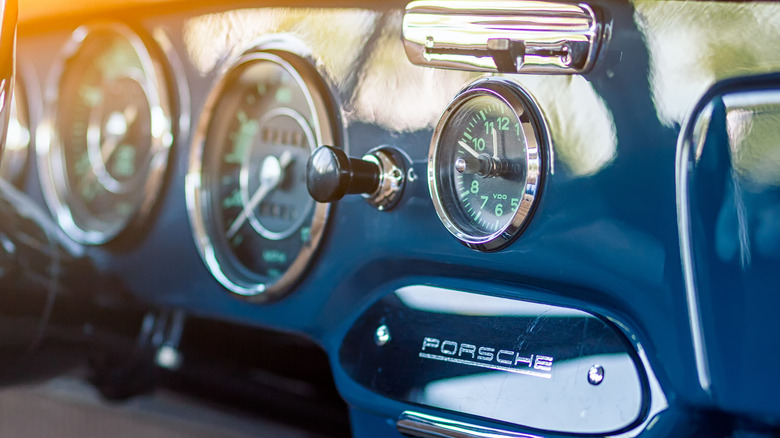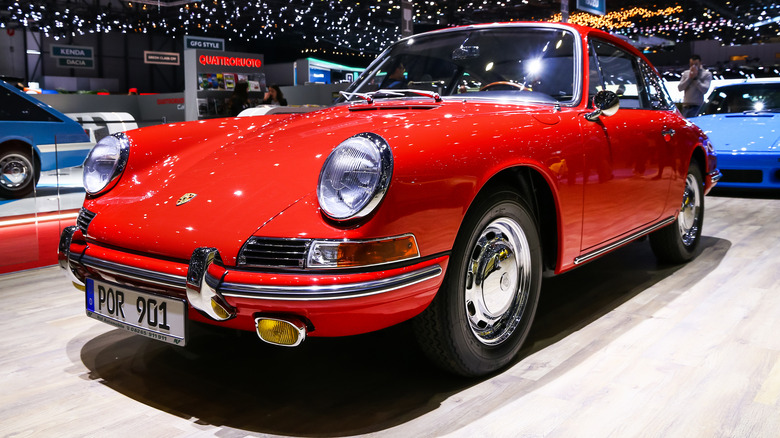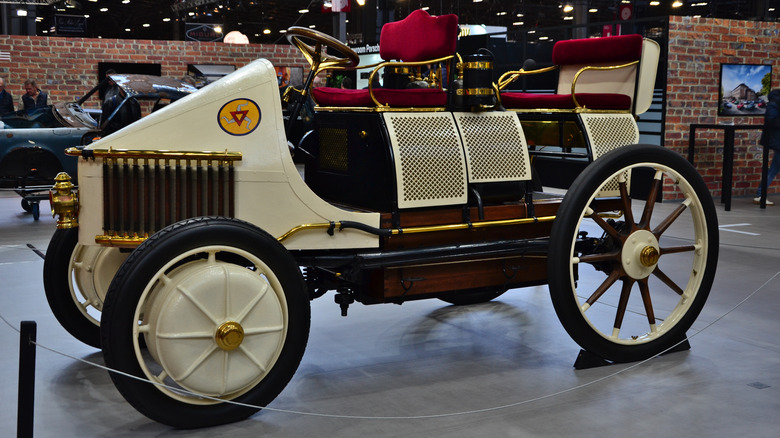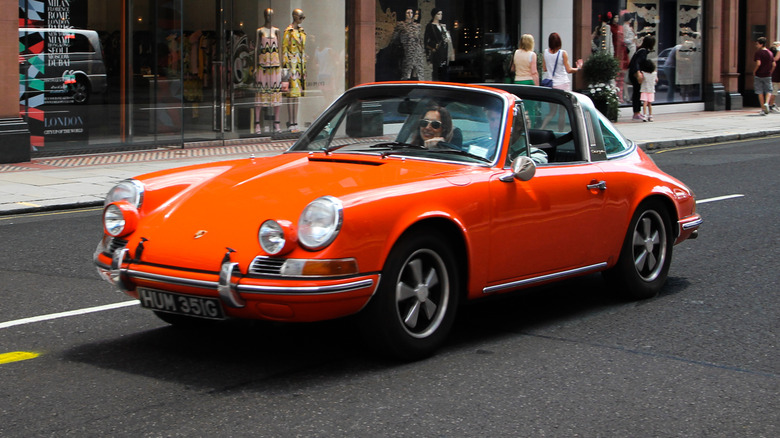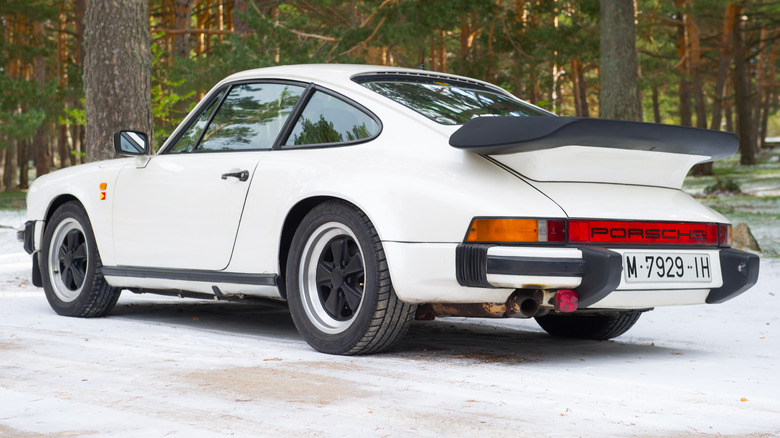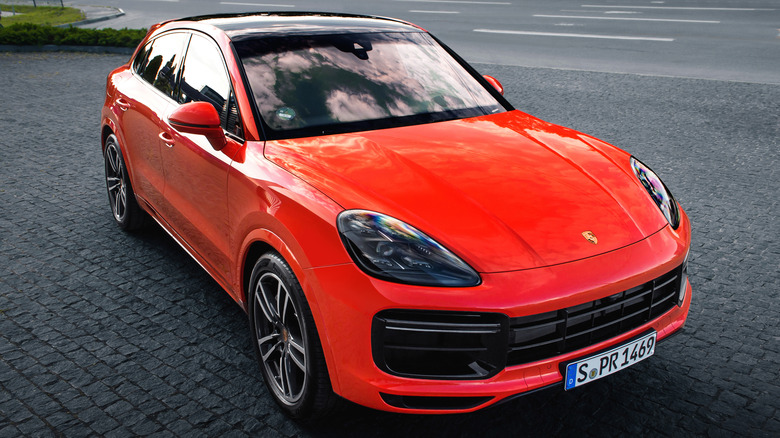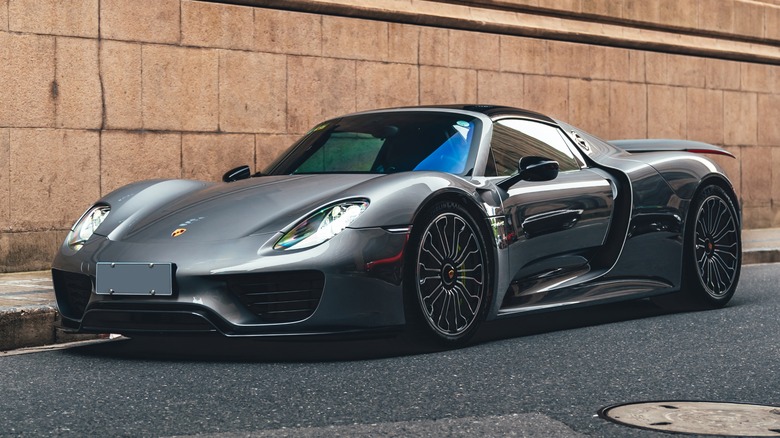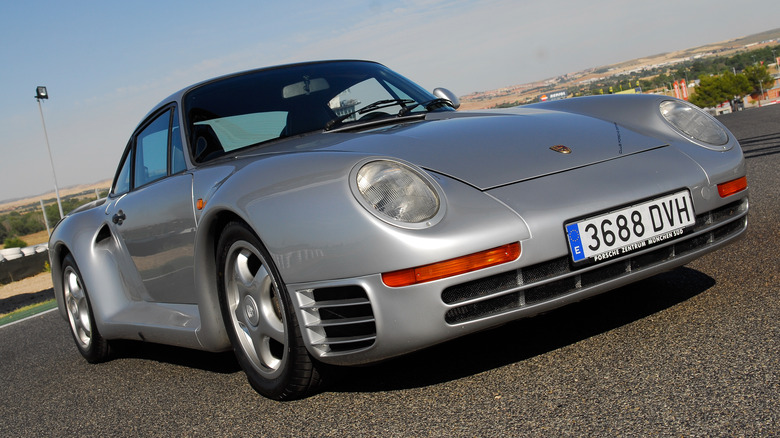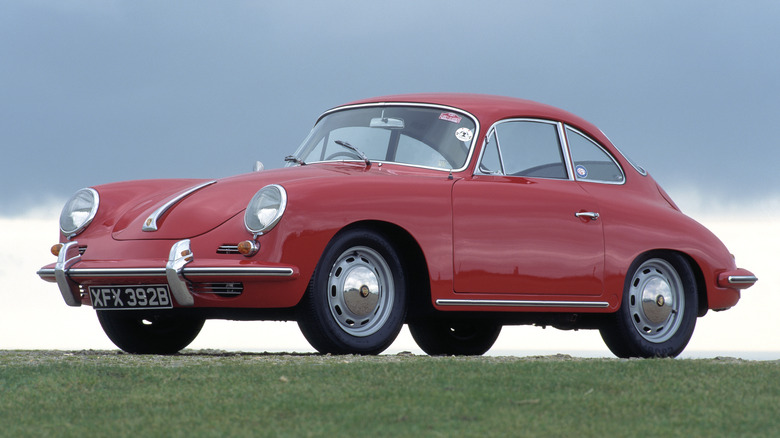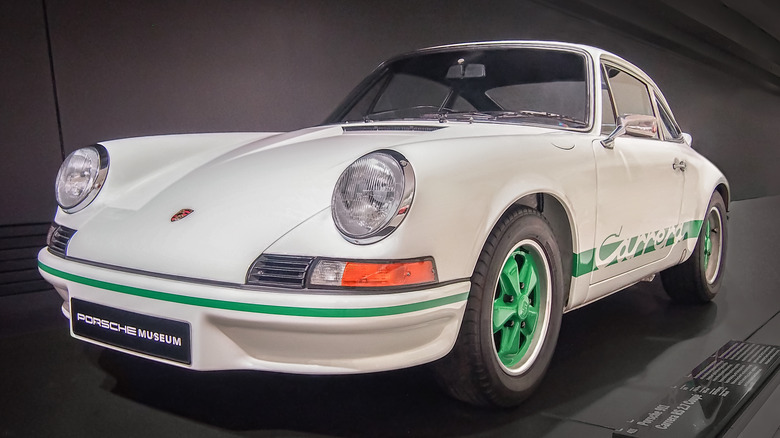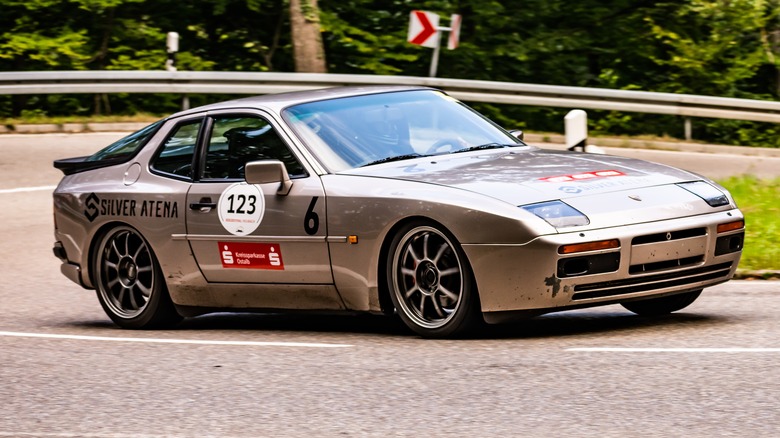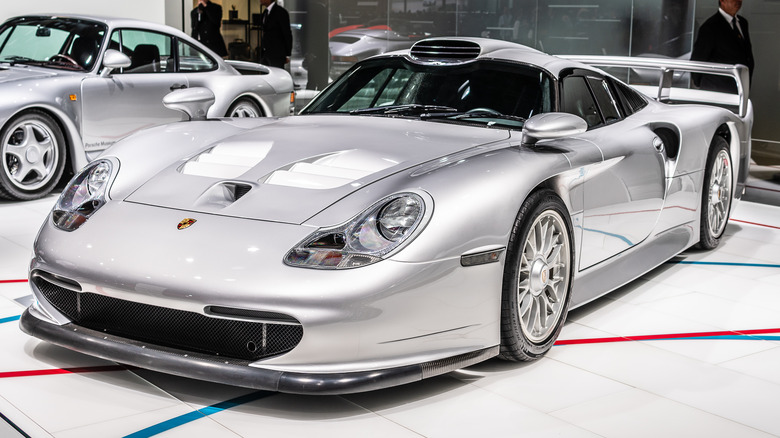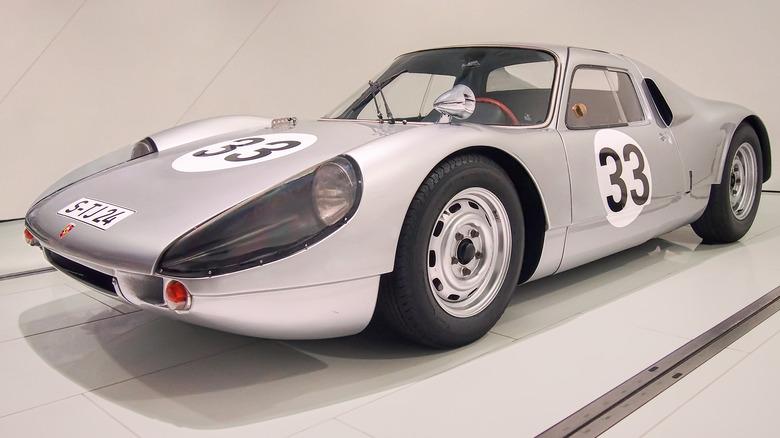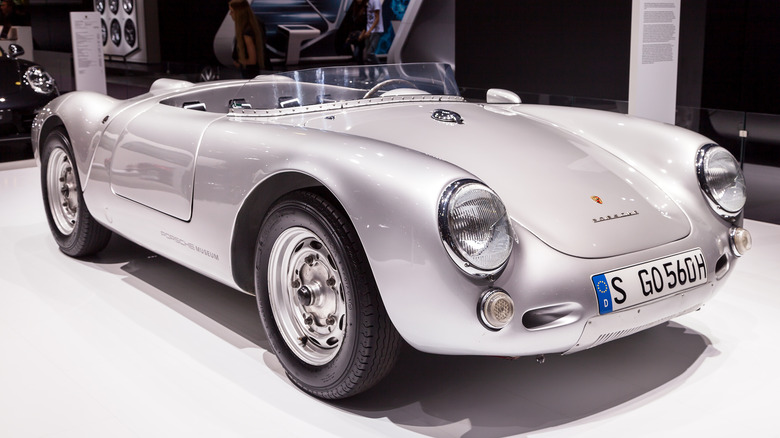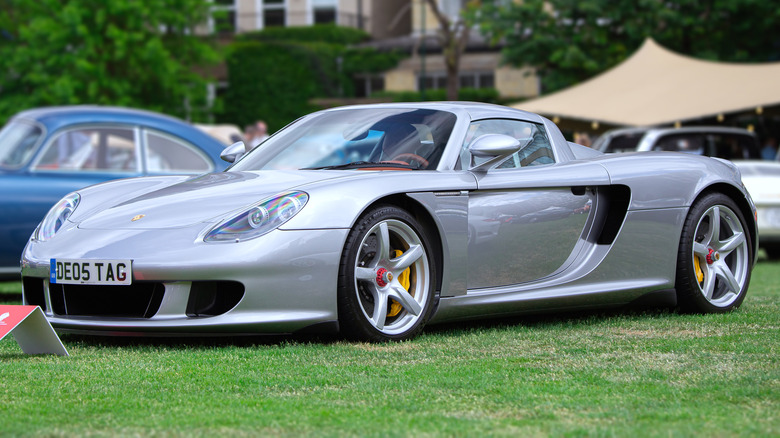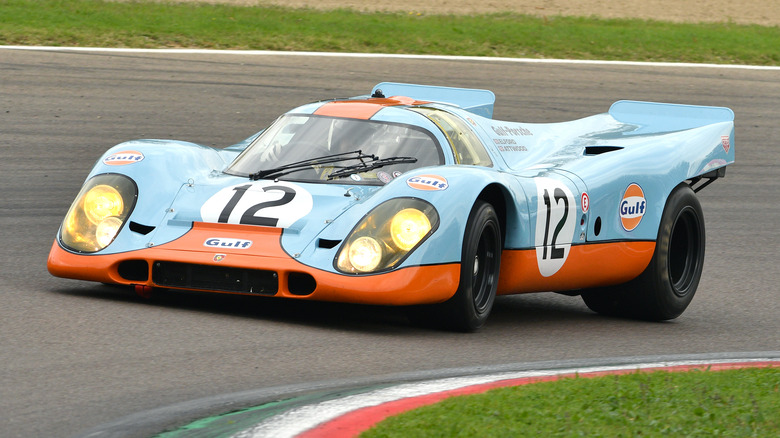The 15 Best Porsches Of All Time
Among the carmakers producing fast cars, Porsche is a key player. With a long history of making winning race cars and competent road racers, Porsche produces some of the fastest and most desirable sports cars in the world. Many of these cars are icons of the industry, and their race teams have won at circuits around the globe time and time again.
Since the start of the new millennium, Porsche has also moved into the luxury car market. It has shown that the experience and skill in developing fast and fun-to-drive cars can translate into creating opulent machines that retain the spirit of a high-performance sports car. The founder of the modern company, Ferdinand "Ferry" Porsche, demonstrated adept abilities for car design from an early age and likely benefitted from his father, also Ferdinand Porsche, who designed one of the best-selling cars of all time, the Volkswagen Beetle. The basis for this car, the horizontally opposed, flat-four engine mounted in the rear is a configuration that endures to this day on all Porsche 911 models. While there are plenty of Porsche cars for the street and track to choose from, these are the best fifteen of them.
1964 Porsche 901
Porsche found mainstream success with its first car, the 356. But after more than a decade of production, the 356 was getting a little long in the tooth, so Porsche deemed it time to create a new model. The successor was not the 911 as many would think. The successor was the 901. It took the basic concept of the 356 and upgraded it in many ways while retaining some of its defining features, such as the rear-mounted engine. However, before it had the chance to build even 100 units, French automaker Peugeot – and indeed, France at large – cried foul. The French had no issue with the Germans making a car, despite the recent bad history between them. They had a problem with the Germans thinking they were so high and mighty they could name a car using three numbers with a zero as the middle digit.
Peugeot laid claim to that naming convention within France and pushed Porsche to rename the 901. History shows that the French got their way and Porsche renamed its car 911 (via Motor Trend). While no historian has yet speculated that this prevented another world war, it is possible the resolution of this crisis is the reason the French and Germans relations have continued on good terms up to the modern day. Possibly avoiding world war makes the 901 a great Porsche.
1900 Lohner-Porsche Hybrid
The modern Porsche 918 is a high-tech marvel of engineering with its immense amount of power from its gas and electric drivetrain, but it is not the first Porsche to use such a system. While not technically a vehicle from the Porsche automobile company, the 1900 Lohner-Porsche hybrid was designed and built by Ferdinand Porsche himself, according to the modern-day Porsche company.
Electric cars were more popular at the turn of the twentieth century than most might know, and Porsche used this for his first car. However, shortly after creating it, he added a gasoline engine to produce the electricity that turned the motors attached to the front wheels. This makes it the first gasoline-electric hybrid vehicle nearly a century before the Prius. While this car may not be fast, attractive, or comfortable, it is an insanely clever use of very early technology, and that kind of makes it the best hybrid – of 1900.
1966 Porsche 911 Targa
The 1960s were a decade in which the mean old government decided to take the fun out of building cars by making them safer for American highways. With consumers, who were also voters, demanding automakers make cars safer, Congress had to act by creating a bunch of buzz-killing regulations to hamper the fast and fun days of the muscle car era. With these regulations came the possibility of the most fun cars of all being axed, the convertible. As Motor Trend notes, just the possibility of such regulation spurred manufacturers to react.
Germans, being the crafty and clever engineering sort of folks we know and love, devised a sneaky plan to build a car that would be safe according to regulators while retaining the fun and free spirit of the convertible sports car, the 911 Targa. According to Hemmings, Porsche dubbed it the "safety convertible." In its debut model, the car came with a broad overarching roll bar with a removal section up front and a convertible style folding window in the back. This little engineering trick not only satisfied regulators but also spawned an icon German auto-style we still enjoy today.
1975 Porsche 911 Turbo
By 1975, the 911 had been around just over a decade. While it had a few styling tweaks and performance bumps, it had retained much of what made the original a good car and what made it popular with buyers. It had a reputation on and off the race track and commanded a premium price as it was a true performance car with high tech power and a well-appointed interior. However, by the late seventies, Porsche was running into roadblocks in figuring out how to squeeze more power out of the little air-cooled flat 6 engines hanging out in the back of the cars.
For the 1975 model year, the engineers at Porsche managed to find room in the cramped engine bay for forced induction by way of a turbocharger. According to the manufacturer, this gave the 1975 model 911 260 horsepower from its 3.0-liter V6 engine, a nearly 100 horsepower gain from the top tier model of the previous year. The Turbo model became the top regular production 911 from 1975 and Porsche has improved upon the original ever since, including adding an intercooler in 1977.
2003-2022 Porsche Cayenne
For the Porsche 911 purist, the inclusion of Cayenne in a "best of" list is sacrilege. Yes, it is controversial, but not without merit. As an exclusive maker of high-speed sports cars, Porsche has never been a high-volume automaker. Anyone with a community college business degree knows that turning profits from low-volume niche markets is difficult. Porsche has had financial ups and downs throughout its history, often flirting with bankruptcy. With such frequent difficulties in mind and under the ownership of automotive overlord Volkswagen, Porsche endeavored to get Porschephiles everywhere to clutch their pearls by creating not just a family vehicle, but an SUV!
Motor Trend acknowledges the trepidation as it was contrary to what every Porsche snob everywhere thought their esteemed go-fast car maker should do. However, creating what turned out to be a capable and dependable family wagon allowed Porsche to exert more effort into producing the fast and fun toys trust fund kids wanted to buy. With the continued success of the Cayenne, Porsche has been able to continue to create masterpieces of engineering to satiate the affluent's desire to find value in what they drive, and that kind of makes it a great car.
2013-2015 Porsche 918 Spyder
Introduced in 2013 and built for just 2 years, the 918 represents Porsche's latest foray into the world of exclusive hypercar building. Using technical know-how along with years of car-building experience, Porsche created an extraordinary high-performance car that pushes the boundaries of what is capable with an automobile. However, the 918 retains a certain reserved and appealing styling that Porsche is known for.
Porsche was keen to boast of the many technological advances in promoting this car when introduced. The concept of creating one of the fastest cars in production while maintaining low CO2 output and high fuel efficiency is unique among hypercars often known for being among the biggest fuel consumers on the road. However, the overall impact on the environment is still likely to be negligible as the total production output for the 918 is just 918 units.
Still, Porsche has grounds for boasting as the car is powered by a naturally aspirated 4.6-liter V8 engine with 608 horsepower that is boosted by two electric motors for an overall power rating of 887, as previously reported by SlashGear. This makes it among the most powerful cars made as well as being one of the most technologically advanced. The hybrid drive system is loaded with electronics to help keep all that power firmly planted on the road. With a price tag nearing $1 million and strictly limited production, this car will remain out of the hands of most people for years to come.
1986-1988 Porsche 959
Sadly, the Group B racing for which the 959 was built did not exist by the time the car was ready (via AutoSport). Fortunately, the car was made anyway and it showcased cutting-edge technology years ahead of its time. Many of the driving aids we rely on in our modern cars may have started out in the 959. It was one of the first cars to have everything computer-controlled from the fuel and spark management to the suspension and all-wheel-drive unit. The car featured a twin-turbo 3.0-liter flat-six engine producing 444 horsepower.
The performance, as noted by Jalopnik, included figures such as a 0-60 mph time of 3.6 seconds and a top speed of 196 mph. Those are impressive stats for today, but they were otherworldly in the late eighties. The ride height was electronically adjustable as well as the front to rear torque split on the AWD. Furthermore, despite its all-out speed and performance capabilities, Car and Driver found the car to be pleasingly refined and comfortable for the typical daily driver. To top it off, the 959 built upon the existing 911 styling and added aerodynamic effects to make a truly stunning supercar that was unmistakably Porsche.
1964-1965 Porsche 356C
The 356 is the car that started it all for the company officially known as Dr.-Ing. h.c. F. Porsche AG, commonly referred to simply as Porsche. Gaining success on and off the track, the Porsche 356 quickly became a car popular for those looking for a nimble, fun, and attractive sports car. Details from the Porsche 356 Registry state that it is built around a similar structure as the VW Beetle.
The 356 used an air-cooled flat four-cylinder engine, but doubled the carburetor count and upgraded the heads, cam, and valves. Over the years, the car was updated a few times until the best of the line, the 356C, was introduced in 1964. Even though the new 911 had already gone into production, demand for the 356 remained and Porsche continued to offer it until 1966.
The 356C is generally considered to be the most desirable as it is also the most powerful of the bunch. Cranking out a whopping 130 horsepower from a quad-cam engine, the sprightly little Porsche provides an exhilarating driving experience that is fast becoming a worthy financial investment for one that is also well sorted with some examples selling – like this one listed by Bring a Trailer — for up to a quarter-million dollars.
1972-1973 Porsche 911 Carrera RS 2.7
Porsche's introduction of the 911 model proved to be a good choice, as evidenced by its continuous production up to today. While the original was an attractive, fun to drive, and reasonably powerful sports car, buyers wanted more. Porsche responded with its first high-performance edition of the 911 with the Carrera RS. While the Carrera moniker had been used by Porsche before, this began the long tradition of giving high-spec 911 models the name, according to the manufacturer.
The genesis of the Carrera was that Porsche would build a car that could be entered into the competition but also driven on the street, per Supercars. Porsche put considerable effort into engineering the engine for high power and gave meticulous attention to weight savings. Superfluous items such as sun visors were removed and door handles replaced with a strap. Anything that one could live without was removed to shed grams from the total weight. Fenders were flared to accommodate wider tires and the suspension tweaked in an effort to keep the car as firm and planted as possible around the track. The end result was a genuinely good weekend racer with good looks and a legacy that continues to define the Porsche brand in showrooms today.
1987-1991 Porsche 944 Turbo S
The 944's greatest attribute is in its style. It is a great-looking car with definitive eighties styling that remains an attractive and desirable GT car. The 944 itself was an evolution from the 924, Porsche's first front-engine vehicle, and the newer car improved upon its styling significantly. However, being a 4-cylinder car, the 944 was always lacking in power. According to Motor Trend, the 944 model line started with about 150 horsepower from its 2.5-liter water-cooled 4 cylinder engine. It benefitted from having balanced weight distribution by having the transaxle placed in the rear of the car, and 944s performed well around the curves.
Porsche finally brought the power up by adding a turbo in 1986, kicking it up to 217. These are still modest figures by today's standards, but respectable for the era. However, the 944 that really shines is the Turbo S. Road and Track details the upgrades over the standard Turbo model with a larger turbo, wider tires, Koni adjustable shocks, and Brembo brakes. Power output had been boosted to a much more competitive 247 horsepower and makes the 944 Turbo S one of the best sports cars of the eighties. Furthermore, while prices are on the rise, nice examples, such as this one on Bring a Trailer, can still be had for around $20,000. That's tens of thousands less than it usually takes to get into a classic Porsche turbo, and makes it a great introduction to the brand.
1996-1998 Porsche 911 GT1
If you run a car company that is known for making some of the fastest cars around, in order to make a splash, you have to create a car that goes insanely fast. Porsche has a history of doing this, and for the nineties, that car is the 911 GT1. While the car is called a 911, it really doesn't share much with the production version. Porsche created it at a time that other supercar makers were releasing all manner of insane cars. This was the time that we saw the McLaren F1, Jaguar XJ220, and Bugatti EB110. With that kind of competition, it is necessary to stand out.
Built to win races, the 911 GT1 spawned a road-going car as well. According to CarScoops, the GT1 is a flat-6 powered screamer with more than 500 horsepower and can hit 62 mph in just 3.7 seconds. Furthermore, it tops out at just under 200 mph. Porsche only made 20 units for the street, and the pleasure of owning one will set you back more than $5 million, as was seen at Gooding and Co. auction house in 2017.
1964-1965 Porsche 904 Carrera GTS
Porsche has been making some of the most beautiful sports cars for more than half a century. These stunning good looks often bleed over into their racing development as well. Some of these attractive racers go up for sale to the general public to satisfy homologation rules of various racing series, and the 904 is a great example of this.
The 904 was created for road racing and it performed well. Taking 4 class wins at Le Mans in 1964-65, the 904 proved to be a worthy competitor, often running up against the likes of Scuderia Ferrari in the battle for a checkered flag. The 904 was originally fitted with the quad-cam 4-cylinder engine of the 356 and 550, but, as stated by the manufacturer, other variants included the 6-cylinder from the 911 and a 2.0-liter 8-cylinder racing engine. Additionally, the 904 was the first Porsche race car to be covered in a plastic (fiberglass) body, which gained admiration from the crews for its ease of repair and low weight.
Street legal versions of the car are highly sought after vehicles, as demonstrated by Sotheby's final auction price of more than $2 million in 2020. As a testament to how popular and great this model Porsche remains, various kit cars and replicas can be had for a fraction of the cost of a "real" one, such as the Beck 904.
1953-1956 Porsche 550
Using the same flat-4 engine that underpins both the Porsche 356 and the VW Beetle, the 550 ups the power output from as little as 25 horsepower in the Beetle to as much as 117 horsepower in the 550, according to official Porsche specs. Adding 4 overhead cams with twin downdraft Solex carburetors made the lightweight 550 a genuine tour de force. The 550 features a tubular chassis wrapped in hand-built aluminum body panels to create a car that zips around the track with impressive speed. While the 117 horsepower may not sound like much in today's world, in the 1950s and in such a light car, it was a land-based rocket.
The combination of lightweight components and powerful engine managed to give Porsche several wins with the car. Porsche also decided to offer the 550 to the public, with one of the most tragic stories surrounding the car owned by actor James Dean. Sadly, in 1955, the actor was involved in a fatal crash in his 550, cutting short his rise to stardom, per the History Channel. He had only released one film at the time, but two more released posthumously ended up being box office hits.
The 550 remains one of the most recognizable shapes in racing history. Over just three years, Porsche made 90 cars. While many of them remain, nice examples sell for well over $4 million at auction, according to ClassicCars.
2003-2007 Porsche Carrera GT
By the turn of the century, Porsche's legacy as a builder of fast cars had been firmly established. 2003 saw the unveiling of the latest Porsche halo car in the Carrera GT, a 10-cylinder mid-engined masterpiece of German design and engineering.
Built at a time of increasing electronic controls and driver aids, the Carrera GT eschews them in favor of brute force and driving experience. However, as Car and Driver discovered, the car is civilized, refined, and easy to drive, despite the monster performance. The V10 engine is naturally aspirated and the transmission has a clutch and a shift lever. There are no traction control sensors and nothing else to hold you back. Sports Car Digest hails it as the "last analog supercar" before forced induction, hybridization, and electronic driving aids made supercars more manageable. The Carrera GT is a beast, but a beast you can live with. With more than 600 horsepower driving the back wheels, drivers need to know what they are doing before strapping in for a ride. Its appearance is definitively Porsche. There is no mistaking it for any other brand, yet it remains unique and is a perfect example of how good a car Porsche can build.
1969-1971 Porsche 917
While many folks may be able to recall the 911 immediately as one of the most attractive and best performing Porsche models, another car from the racing side of the company may be recalled by its looks, if not by name. The Porsche 917 is that car, and it may be the sleekest and most attractive Porsche car you can never buy. The car had been created specifically to run at the 24 hours of Le Mans in the late sixties and it turned out to be a real mean machine.
Equipped with a 5.0-liter flat 12 cylinder engine and meticulous work done to shed as many grams as possible, the 917 is good for hitting 100 km/h in just 5.5 seconds and giving Porsche its first win at Le Mans, according to the company. Beyond the power and lightweight construction, the 917 just looks cool. The cache of cool is boosted by the fact that the car was driven by none other than the king of cool, Steve McQueen, in the movie "Le Mans." The 917 is the best of racing, style, and film and enjoys legendary status in the annals of racing. Anyone who wants to recapture this level of cool for themselves will need some deep pockets as the car failed to sell for its estimated price of $16 to $18 million at Sotheby's in 2021.
